Full Guide To Jade vs. Emerald (This Is The Difference)

In order to work with our crystals effectively, we need to understand their properties. With crystals that look similar or have similar uses, such as emerald and jade, it can be difficult to determine which one to work with. The answer should always be; the one that you are drawn to the most. However, if you are looking to find the difference in physical appearance as well as metaphysical properties, you’ll find your answer here. In short;
Emeralds are generally a vibrant green color, whereas jade is more subdued and can come in various colors. Emerald is also more likely to be transparent and to have inclusions than jade. Jade is often used for serenity, while emerald is commonly used for balance and patience.
Do you want to know more about the exact differences in (meta)physical properties? Continue reading!
Want more help or information? If you have any more questions after reading this blog post or want a personal answer for your specific situation, join the free Facebook group! We promise you’ll get an answer from either our team members or a community member.
Also Read: White Jade vs. Green Jade – What’s The Difference?
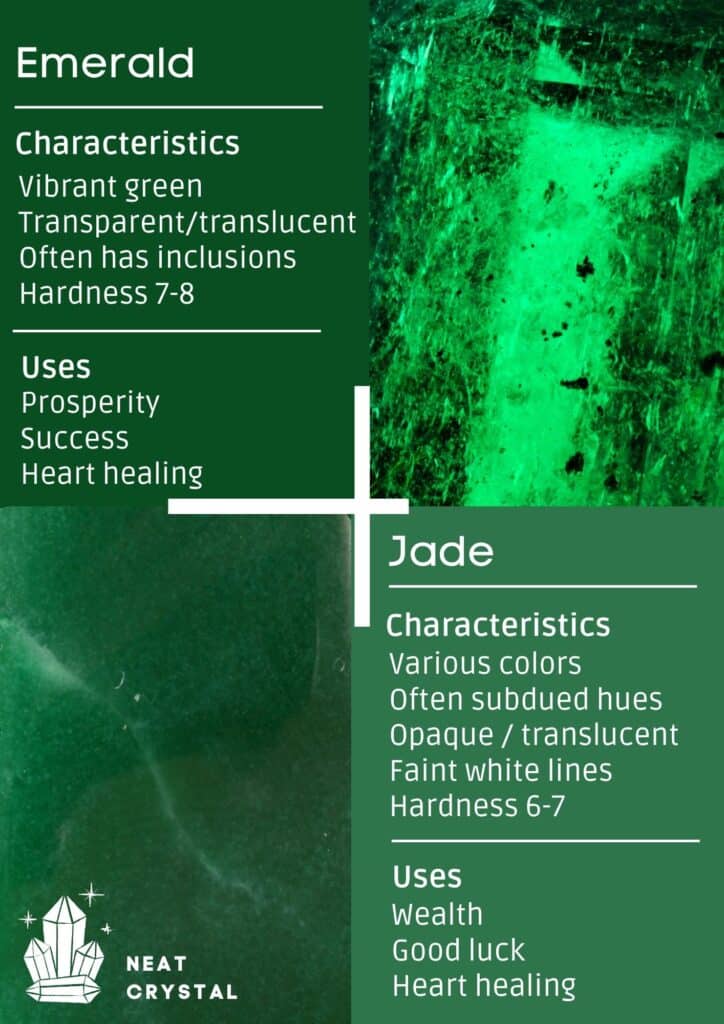
Color
Green jades and emeralds can be similar in color, making it difficult to differentiate. However, there are some distinct differences between the two.
Emeralds can only be green. Although the shade of green can differ depending on where they were mined, they are generally quite vibrant.
Jades can be green, but can also come in various other colors. The most valuable shade of jade is the “Imperial Green”, which also happens to be the closest in color to Emeralds. However, most green jades aren’t as vibrant as the Imperial and instead offer lighter, more subdued colors.
Also Read: Jade vs. Jadeite – What’s The Difference?
Opacity and Clarity
Apart from their colors, we can look at a stone’s clarity and opacity to determine whether it is jade or emerald and how valuable they are.
The clarity of jades can vary from entirely opaque to semi-translucent. However, the most valuable type of Jade, Imperial Green, is semi-translucent and looks glossy.
Emeralds are never opaque, and inclusions and fractures are much more common than in jades. Unfortunately, they still impact the stone’s value. The clearer an emerald, the more valuable it is.


Location
The Myanmar region is the leading source of jade. Other jade deposits can be found in New Zealand, Guatemala, and the areas near the Ural Mountains in Russia.
Emeralds were originally mined in Mount Smaragdus in Egypt. The world’s largest Emerald producer is in Colombia. Emeralds are also found in Zambia, Zimbabwe, and Brazil.
Also Read: Jade vs. Malachite – What’s The Difference?
Hardness
A stone’s hardness is determined by how they rate on the Mohs scale. Jade varieties slightly differ in hardness. The jadeite variety is slightly harder, rating 6.5-7 on the Mohs scale, while nephrite rates 6- 6.5. On the other hand, Emeralds rate 7.5 -8 on the Mohs scale. Although jades are tough stones, emeralds are more scratch-resistant and better for jewelry use than jades.
Care
Care and cleaning boost the longevity of the stone. Soap, warm water, and a soft brush are the go-to cleaning methods for these stones. Jades without fractures can withstand mechanical cleaning systems like steam and ultrasonic cleaners. Harsh chemicals and acid treatments can destroy jade because it is naturally porous. Bleaching and heat are enhanced on jades to improve their color and appearance.
Emeralds naturally contain surface-reaching fractures; as a result, they are treated to enhance their appearance. Enhancements on these gems are graded on four levels: moderate, minor, none, or highly enhanced. At least 90% of emeralds have their fractures filled with polymers, oils, and resins. Ultrasonic vibrations will damage the fractured stones, and steam cleaning will sweat oils out of the filled fractures. Clean an emerald with warm water and mild soap only when needed. Fillings are meant to improve the appearance of an emerald and not to boost its durability.
An emerald’s appearance will deteriorate over time if proper care is not taken. Wear emerald jewelry only for special occasions instead of daily for longevity.
If you want to cleanse your stone energetically, you can smoke cleanse, place the stone among other energy-raising crystals, such as clear quartz or selenite, or place the stone in the moonlight overnight.
Also Read: Jade vs. Serpentine – What’s The Difference?
(Meta)physical Properties
Although jade and emerald look similar, they have distinctly different qualities. Below you’ll find the information on jade and emerald.
Healing properties
Jades are commonly for medicinal purposes in the Chinese and Greek cultures. Jades are believed to heal stomach and kidney-related problems, and emeralds are believed to spread regenerating rays to all body parts.
Good luck stones
Wearing or carrying a piece of jade is believed to attract wealth and good luck to its owner. Emeralds are also believed to bring prosperity and success to their wearer. The stone is ideal for people in business or anyone that wants to be famous.
Positivity
Jade stones are believed to dispel negative energies when worn in contact with the skin. Emeralds are also helpful in emotional and mental healing due to their association with the heart chakra. This way, its wearer can receive and give unconditional love freely. Both stones help bring calm and positive thoughts through challenging situations in all forms of partnerships. For best results, an emerald can be worn on the right arm, over the heart, and on the little or ring finger.
Chakra Association
Jades are associated with different chakras depending on the color of the jade. The green jade and emerald are related to the heart chakra.
If you’re not too familiar with chakras, here’s a quick explanation to help you understand how these crystals work. Chakras are the different energy points in our bodies. There are 7, each of them linked to a certain aspect of our lives. We can link each chakra to crystals or gemstones by color and their properties.
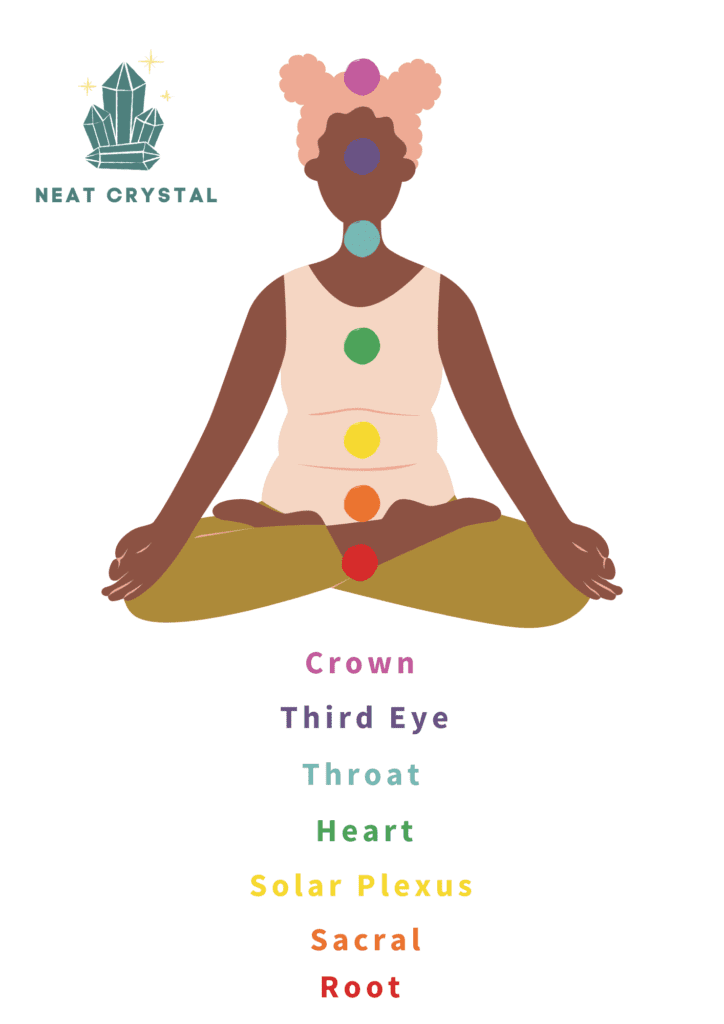
The root chakra (Muladhara) is represented by black/red and is located at the base of the spine. This chakra is related to stability.
The sacral Chakra (Svadihsthana/ spleen) is represented by orange and is located below the navel. The sacral chakra is associated with feelings and sensuality.
The solar Plexus Chakra (Manipura) is represented by yellow and is located above the naval. The solar plexus chakra is related to intellect.
The heart Chakra (Anahata) is represented by green/pink and is located in the chest area. This chakra is associated with loving and emotional healing.
The throat Chakra (Vishuddha) Is represented by blue and is located at the end of the throat. This chakra is associated with communication and tangible dialogues.
Third Eye Chakra (Ajna) Is represented by indigo and is located between the eyebrows. The chakra is related to spiritual understanding.
The crown Chakra (Sahasrara) is represented by white and is seen as our connection to the divine.
Using green jade or emerald will restore emotional balance and promote honesty and trust in your own choices. Emeralds are also believed to gather mystical knowledge when held over the third eye chakra.
If you’re wanting to meditate with these stones, particularly for the heart chakra, we recommend using a guided meditation. You’ll find one that might be helpful below:
Elements
Many cultures have developed the idea of elements to explain nature. In the west, this idea was created by the ancient Greeks and consisted of 4 elements: Earth, Air, Fire, and Water. In India, another element is added: Akasha, representing the foundation of the other elements.
The 4 elements represent the following:
- Earth for personal growth, stability and security
- Water for love, friendships and emotions
- Air for intellect, wisdom and communication
- Fire for energy, passion and action
By looking at a crystal’s or gemstone’s properties, we can determine which element fits best.
Both jade and emerald are earth elements and offer an excellent connection to mother nature and signify prosperity and abundance.
Zodiac and Birthstone
Different cultures around the world create a link between gemstones and the months. The Indians created the ayurvedic list of birthstones, the Tibetans created the mystical, the traditional list originates in Christianity, and the American Gem Association created the modern list. When a stone is associated with a zodiac sign, it is particularly beneficial to them.
Jade is the mystical birthstone for March, associating it with Pisces and Aries, born in that month.
Emeralds are mystical birthstones for January (Capricorn and Aquarius) and traditional and modern birthstones for people born in May (Taurus and Gemini). Emeralds are also the anniversary gemstone for the 20th and 55th year.
Both jade and emerald are also associated with Mercury, the planet of communication. As a result, it is associated with Virgo and Gemini, which are also ruled by this planet.
Numerical vibrations
All crystals are made of energy and hence vibrate at different frequencies, depending on matter and rays of light. When choosing these stones, it is advisable to choose one that aligns with the frequency of what you desire. Green jades vibrate at 11, associated with creativity, intuition, and connection to a higher self. According to numerology, emeralds vibrate at 4, a number related to mental well-being and stability.
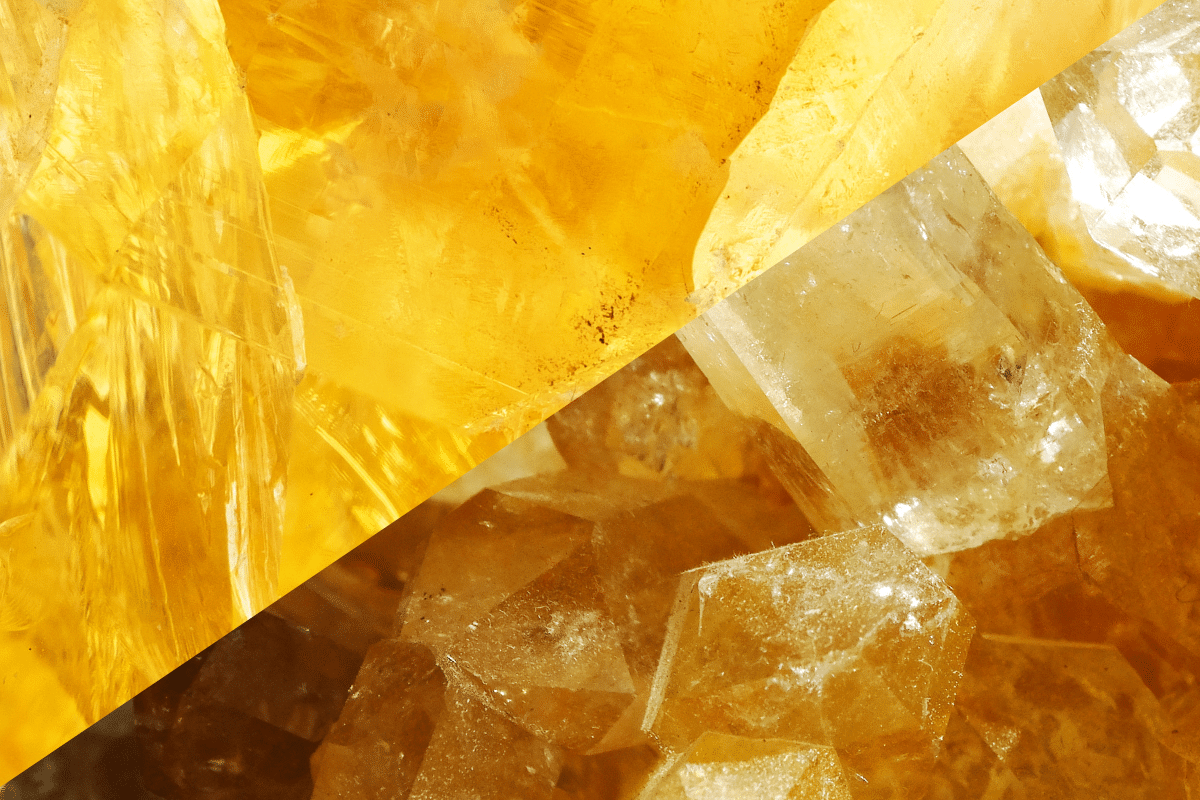

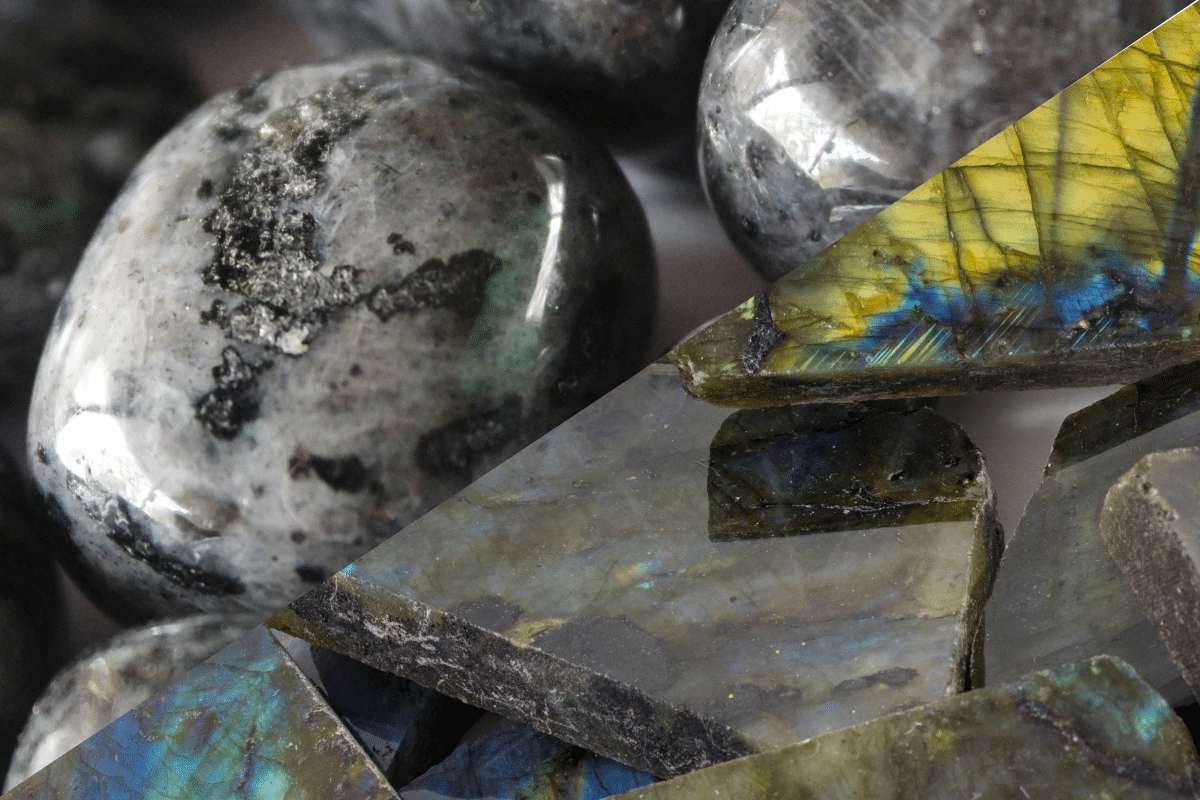


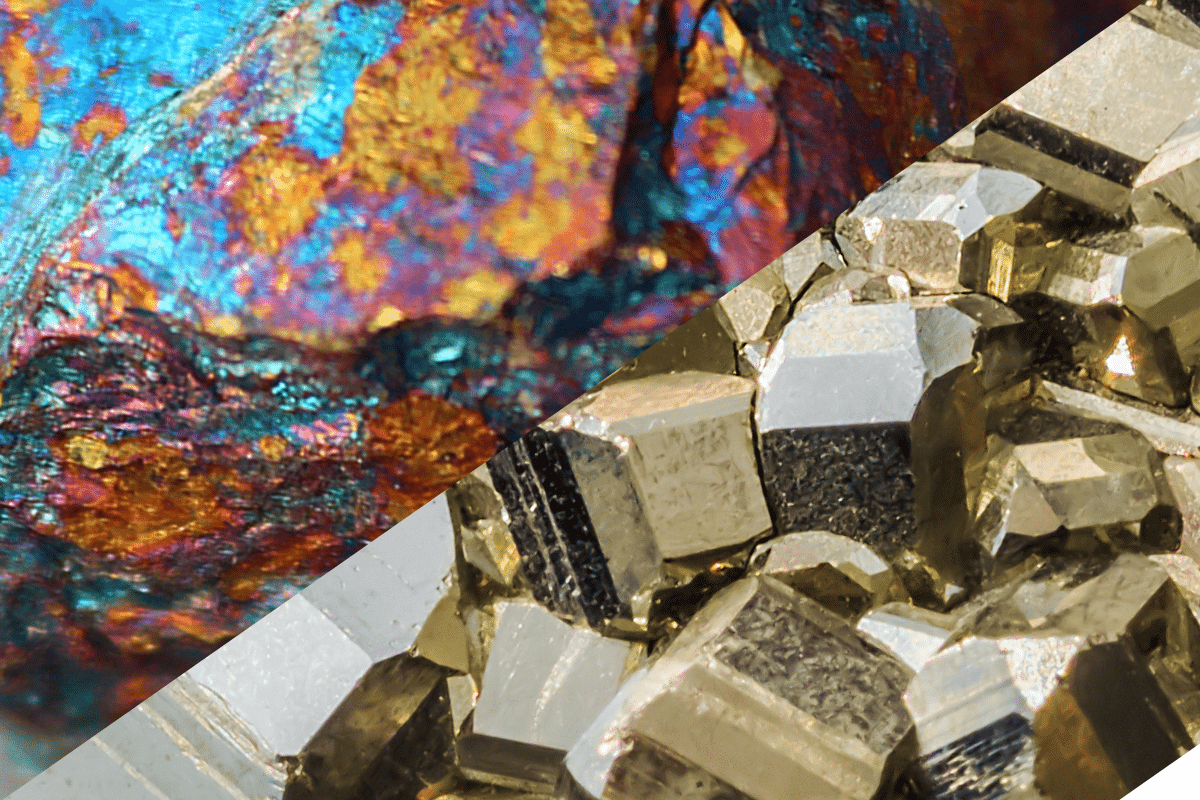
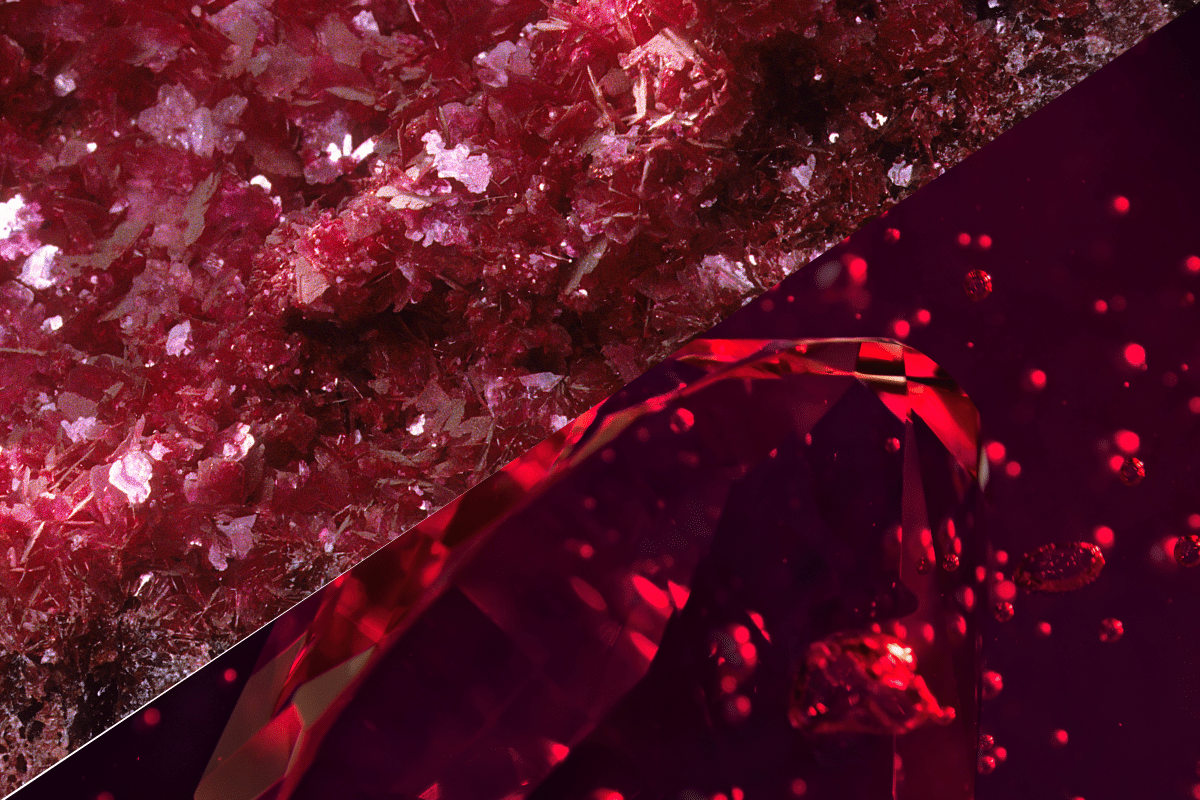
17 Comments